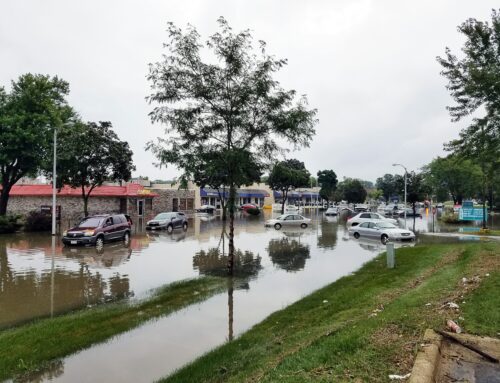Yesterday, Congress passed the 33rd short-term extension of the federal government’s transportation program since 2009. (There was also a two year patch from 2012-2014, which we won’t call “short-term” but was still short of definitive action.) This move by the Senate will take $8 billion of general fund revenue and dump it into the Highway Trust Fund to cover the next three months. The $8 billion in revenue is the result of various gimmicks and tricks, and some of that revenue will not actually materialize for nearly a decade. But the program expires tonight and Congress wanted to split town for August, so the bill passed.
In addition to this 3 month extension, a mirror of what the House of Representatives passed, the Senate passed a long-term, 6 year transportation bill, the Developing a Reliable and Innovative Vision for the Economy or DRIVE Act. The Senate’s 6-year $320 billion plan is $90 billion more than they have. Of course they only found $45 billion in offsets, enough for the first three years, after that it's up to the next Congress to figure out how to fund it. And what it does find is symptomatic of Congress’ general budgeting problems – for the Highway Trust Fund and beyond.
Of the $45 billion in offsets the Senate offers as “pay-fors,” $17.1 billion comes from lowering the interest rate of dividends banks purchase from the Federal Reserve. What does this have to do with transportation? About as much as you think – nothing. It also would require banks to report more information on outstanding mortgages, which is worth an estimated $1.8 billion. Besides the earmarking of revenues from completely unrelated parts of the federal budget, the bill grabs potential savings years into the future for the things that are related. It would extend current budget treatment of TSA fees from 2023 to 2025, worth $3.5 billion. In fact, less than ten percent of the offsets will occur during the three year spending spree and less than a third of the offset cash will appear in the six year life of the bill. After the next three years, it will be up to the 115th Congress at the end of their terms to come up with a way to make up the trust fund shortfall in transportation spending that the 114th Congress put into place.
So now it is up to the House of Representatives to take up a 6 year proposal. It’s not likely to be a carbon copy of the DRIVE Act, given Speaker Boehner reportedly called the legislation “a piece of [excrement].” You can guess what he said, but this is a family Wastebasket.
The House (and the Senate) must do better. And looking at the Senate bill, it would be hard to do much worse. It’s time to stop robbing Treasury Peter to pay Transportation Paul. Instead of the patchwork offsets and cash infusions it’s past time for Congress to reexamine how revenue is generated for the highway trust fund and come up with responsible solutions. If Congress can’t find a way to pay for the investments it wants to make, we must live within the limited means of a gas tax. The gas tax that was set in 1993 buys a lot less than it used to, generating about $11 billion less each year than we spend. This shortfall is both because of inflation (especially transportation materials the cost of which has inflated much more than the overall economy) and lower revenue because Americans are driving fewer miles in more fuel efficient vehicles.
It’s pretty clear that the future leads to an alternative financing mechanism like some sort of a vehicle miles travelled tax. It’s much more of a true user fee than the gas tax and can be adjusted for location, type of road, type of vehicle, you name it. It has been working in pilot projects and a newly launched program in Oregon. In the interim, Congress should be looking at tolling and the gas tax.
Also, the limited transportation dollars need to go further. Last year we released the report, Repair Priorities with Smart Growth America, which found that, on average, 55 percent of states’ spending on roads went to new construction and only 45 went to repair. That has huge cost consequences both now and in the future. The more degraded roads become, the costlier it is to repair. And every new road adds to the future repair backlog. Even if the construction/repair percentages were reversed, or states suddenly spent twice what they currently do on repair, they would struggle to ever make the backlog disappear. Congress should create incentives to get states to prioritize maintenance over new construction. Conversely there should be disincentives to large wasteful capital intensive construction projects.
We are eager to see what comes out of the House after August recess. And we hope to drive the DRIVE Act right off a cliff.












Get Social